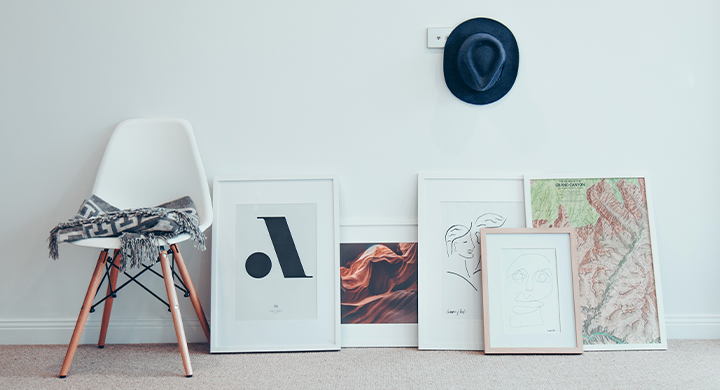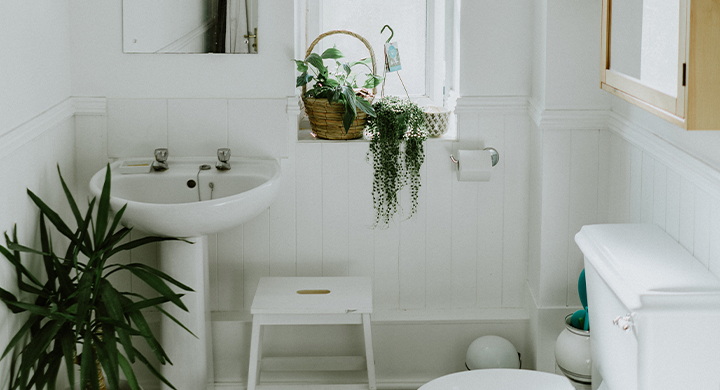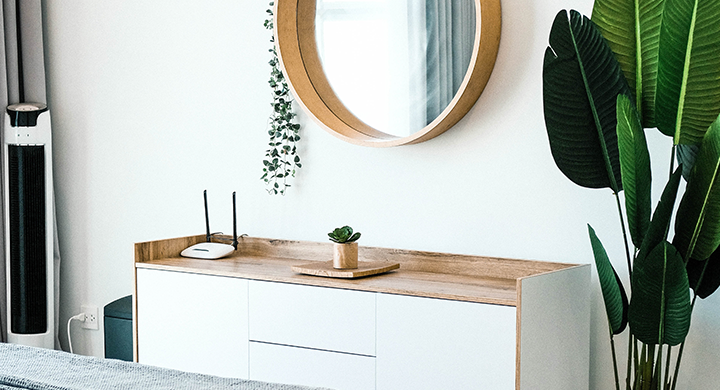One of the sweetest luxuries of being a renter is the availability of a building manager or superintendent. You won’t likely appreciate what a convenience it is until you’re a homeowner, so definitely take advantage.
But, as with any luxury, having a super can make you a little soft in the middle. Besides, managers — just like the plumbers, electricians and general contractors that homeowners employ — often have full dance cards. You’re not always going to be the priority. No matter, because the truth is, you can do lots of stuff yourself!
All you need are the right tools. Figuratively and, in this case, literally. So here’s a tool list to get you started.

1. A small toolbox
To put the following stuff in. So you don’t lose the following stuff in this list. And so you always know where to find the following stuff. Plus, they are just downright fun to shop for; some look like little fashion bags, some look like farm buckets and some are just bold and cool looking. Have fun, and best of luck not disappearing down a rabbit hole on item No. 1.
2. Stepladder
Okay, you can’t fit this in the toolbox, but you’ll need a lightweight, durable folding stepladder for reaching high storage, cleaning cobwebs from ceilings and ceiling fans, hanging art and (this last one’s especially important to us insurance types) checking your fire alarms. Be sure to change the batteries — new ones on the day you move in and then about once a year after that.
3. Claw hammer
Ever heard someone described as being “as dumb as a bag of hammers”? It’s not very nice, but this much is true: A bag of hammers is not very smart. All you need, especially as a renter, is one very good, versatile* hammer.
*Versatility is key where all these tools are concerned. Chances are, you haven’t got extra space for a workshop, so every tool you own should be high quality and good for a wide range of stuff.

Photo by Christopher Burns on Unsplash
At this point, you might only be using a hammer to hang art or assemble flat-pack furniture, but a good hammer is one of your more essential tools and should last a lifetime, so take a long-view when it comes to tools. We suggest a forged steel rip-claw hammer.
- Make sure it’s made of a single piece of steel. Hammers with separate heads will loosen over time.
- Look for a smooth hammer face. Textured faces are available and grip nails a bit better, but if you’re hanging art and miss the nail (and you will miss the nail), textured faces scrape up the wall more than smooth ones. Oh, and a very important side note: Check your lease restrictions to be sure you’re allowed to hammer, bang and nail things to your walls; some landlords don’t allow it.
- Finally, the claw. That’s the non-banging side of the hammer, which appropriately looks like a claw. Go with the “rip claw” as opposed to a curved claw. Both styles remove nails just the same, but the rip claw will be more useful when you’ve got a home of your own one day. Again, versatility.
Helpful hammer hint: When using a hammer to remove a nail, place a wooden shim or a paint-stirring stick between the head of the hammer and the surface that’s holding the nail. Then lever the nail from the wall or surface. Sans damage.
4. Cordless drill
For a renter, the cordless drill is the swiss-army-knife-on-steroids of tools. It’s the only power tool that we’ll rank among “must-have tools” rather than simply “nice-to-have.”
It’s hard to start a list of all the uses you’ll find for your cordless drill without sounding like an ad for a cordless drill. Assembling furniture, mounting window treatments, pre-drilling screw holes for your dust-buster wall mount/holster thing—you’ll save time every time you reach for it (for the record, this really is not an ad).
Note: Before you go drilling holes, check with the building manager. In most cases, they allow it as long as you spackle when you vacate, but better safe now than sorry later.
Here are some key cordless considerations:
- Power: Measured in voltage. More voltage means more torque (twisting force). You might think you have enough torque in your big, strong wrist. You don’t. 9.6V should do the trick.
- Clutch: You want one. A clutch stops the bit from twisting once it reaches a certain resistance, which prevents stripping the head of the screw and the subsequent violent cursing.
- Speeds: Choose a drill with two speeds. One low-RPM speed for driving screws and a high-RPM for drilling.
- Battery: Go for NiMH. They’re smaller, lighter and run longer than nickel-cadmium batteries. Charging speeds aren’t super important unless you’re framing homes on the side, but get at least two batteries so you can rotate them on the charger and the drill.

Photo by Phil Hearing on Unsplash
5. Plunger
You need a plunger. This should go 100% without saying, but we’re 100% gonna say it anyway. Of all the basic tools in your box, the plunger is the one you will fall on your knees and thank heaven for when you need it. Of course, if the floor is flooded, we suggest thanking heaven while standing up. You might not know that plungers come in three general varieties:
- Basic sink plunger. Those are the ones most often used by plumbers who are also video game characters. As their name suggests, they’re designed especially for sinks.
- The accordion toilet plunger. The best for toilets, but they can be hard to work with and don’t work well for sinks. Which is good because you definitely do not want to mix the two kinds up.
- The standard toilet plunger. THIS IS THE ONE YOU WANT. Effective for toilets, just pop the extension flange back up into the bell, and it works for sinks, too. Versatility for the win (even when the versatility seems more than a little ew).
6. Adjustable Wrench
Pretty straightforward. One size fits most nuts and bolts.
7. Level
As a renter, hanging art on your walls is one of the few aesthetic changes you can make to your place without risking some portion of your security deposit. (Note: Please don’t take our word on that. Ask your landlord.) Having the right toolkit for that job, however superficial, will make your life a lot simpler and your walls a lot more grown-up looking.
8. Stud Finder
Insert dad joke here, if you must. We’ll spare you.
A stud finder helps you find wall studs — the two-by-fours that make up the framing skeleton inside your walls. If you’re hanging something heavy on your wall, or something that supports something heavy — like a bicycle mount — you’ll want to find a stud to anchor into. Again, consult your landlord before banging.
If you haven’t got a stud finder, there are plenty of workarounds. For example, you can use an electric razor, electric toothbrush or anything else that vibrates. Run the vibrating object along your wall horizontally. You should be able to hear the resonant hollow sound when it’s just drywall, then the sound will pitch up as it hits the stud.
Another very effective way of finding a stud is to measure 16 inches from a corner. If there’s not a stud every 16 inches, there should be one at 24 inches. 16” and 24” are the two standards used by builders. And if you know that little fact, it doesn’t matter your gender; you’re the real stud.
Sorry. Couldn’t resist.
9. Tape Measure
The world of tape measures is surprisingly complex today. Lasers, digital readouts, magnetic tape, automatic and manual locking options — it’s all a bit more complicated than it needs to be, frankly.
If it doesn’t need batteries, or bells or whistles, why bother? Get a rock-solid, durable tape measure, and save the superfluousness for another gadget.
Note: It’s literally impossible to shop for anything online without a tape measure handy. Couches, cushions and curtains all need exact dimensions entered before you can hit “Buy.”

Photo by Minh Pham on Unsplash
10. Allen (Hex) Wrench Set
A hex wrench is one of those tools you can’t really work around. You might, for example, be able to use a butter knife to loosen a flathead screw (please don’t). You might be able to use a pair of pliers instead of an adjustable wrench to loosen a hex bolt. (Again, please don’t. You’ll strip the bolt and very possibly hurt yourself.)
But there’s no good hack for a hex. You’ll need them for building flat-pack furniture like a bed, shelves or a dresser (a #10, to be precise) and also for most bicycle repairs.
11. Screwdrivers
For basic household needs, we suggest a ratcheting driver with multiple, interchangeable heads.
So there it is. Eleven toolbox essentials. That’s just for starters; you’ll have the rest of your life to accumulate more.
Bonus: Super Stash of Command Adhesive Strips.
We mentioned this before, but it’s worth repeating. Some properties won’t allow you to even hang a picture with a nail. Make sure you’re clear about this before you start arting up your joint. And while these aren’t necessarily tools, command adhesive strips are a friend to all renters. These days they bear some pretty hefty loads, and they cut down substantially on the spackling when the lease is up.
Remember: Take care of your tools and be careful who you lend them to. Oh, and always wear eye protection — you’ve only got two, and you want to keep them both. Sorry, we sound like an insurance company, but that’s because we are.






